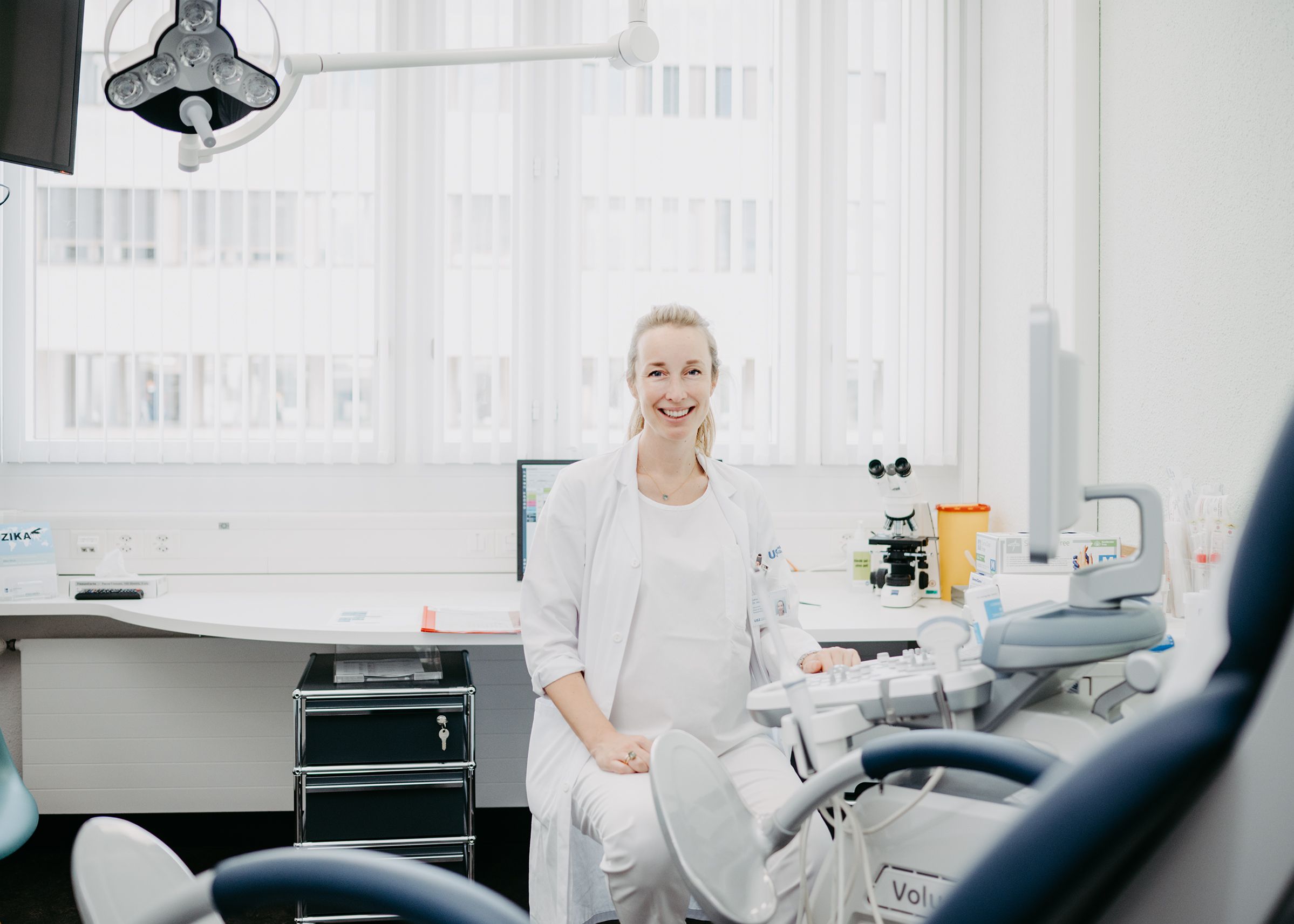We also examine whether there are polyps (increased growth of the uterine lining) or fibroids (benign muscle nodules) in the uterine cavity that prevent implantation.
The following tests are available to us for this purpose:
- Hydrosonography
- Hydrocontrast sonography (HyCoSy)
Both examinations can easily be carried out during consultation hours. Infections in the area of the cervix should be ruled out beforehand.
Procedure of the examination
During the examination, a thin, soft tube is inserted through the cervix into the uterus. A saline solution can then be introduced into the uterus to unfold and assess the uterine cavity, as well as a contrast agent visible on ultrasound to visualize the patency of the fallopian tubes. Within a few minutes, an ultrasound scan can identify any abnormalities that might prevent pregnancy.
Hysterosalpingography (HS G), which used to be used more frequently in the past and involved the display of a contrast medium via X-ray images, has now been almost completely replaced by hydrocontrast sonography.
If the hydrosonography reveals abnormalities in the uterine cavity, these are usually viewed and treated by means of a hysteroscopy under a short anesthetic.
If the preliminary discussions reveal indications of previously undiagnosed endometriosis, a laparoscopy may be useful. During a laparoscopy, the patency of the fallopian tubes can also be checked by means of a so-called chromopertubation, in which a blue solution is injected through the fallopian tubes.

